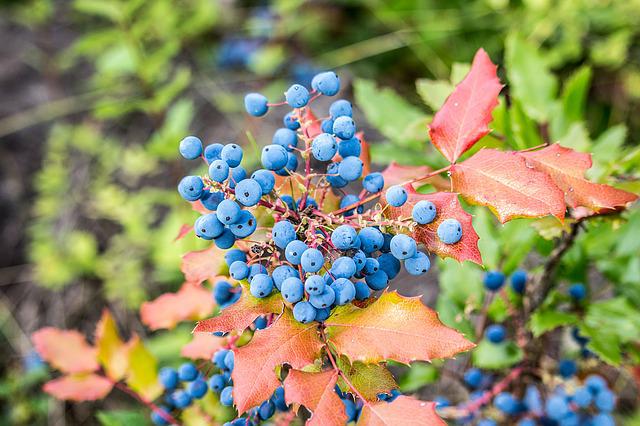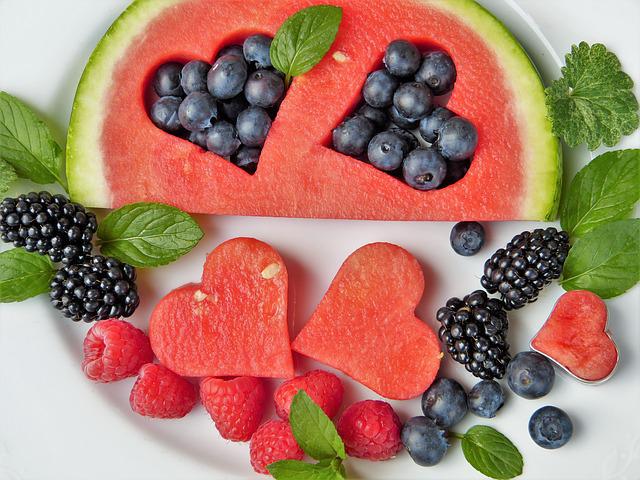Are Wild Blueberries Better?

Wild blueberries have much more health benefits than regular blueberries sold. According to the site, as the berries got used to the cold weather and harsh climate in Maine and Canada, they became more concentrated. These berries are more likely to be hardy than the cultivated berries, which are usually grown in milder climates and less rugged areas.
Table of Contents
Blueberry Facts
After the glaciers retreated over 10,000 years ago, the barrens of Maine, Eastern Canada, and Quebec became fertile ground for the emergence of wild blueberries. Wild Blueberries, unlike regular blueberries, are not grown in a garden. As a result, there are thousands of genetically distinct varieties of these plants all over the place where Mother Nature originally planted them.
They have an intense, delicious, sweet-sour taste and a spectacular blend of complex flavors because of their wide variety.
- The more hostile the surroundings, the more powerful the defense
Phytochemicals found in wild blueberries protect the fruit from the effects of the sun’s rays and harsh conditions. So wild blueberries have more anthocyanin than regular blueberries because of this. The choice is clear for those who enjoy the extra antioxidant protection that comes from eating wild blueberries. Because of this, wild blueberries are a 10,000-year-old antioxidant superfruit.
Growing
It takes a lot of planning and hard work to grow blueberries that aren’t wild. Wild blueberries grow in fields and rocky hills called barrens, where they live. The wild blueberries have been growing on their own for a long time.
There isn’t a lot to do with wild blueberries because they grow independently. Field owners don’t do anything to help the plants grow, but they sometimes bring in bees to help them naturally pollinate the bushes. They cut their fields with rotary mowers every other year to eliminate the wild blueberries that grow there.
Characteristics
There is little variation in commercially grown blueberries’ size, color, and flavor. Wild blueberries are much smaller than their domesticated counterparts, with some exceptions. Different shades of blue can also be found and almost black. The flavor can range from extremely sweet to barely sweet.
Height
A wild blueberry bush known as “lowbush” is found in the United States and other countries. Through runners, they disseminate low and wide, randomly covering entire fields. Harvesters must get down on their knees to access them.
Genetic Composition
There are a lot of genetic differences that make things like taste, color, and size difference. Since wild blueberries are not grown or tampered with by humans, they are 100% wild. There is no genetic engineering in the wild blueberries, making them a very diverse crop.
Selective breeding and farming practices have led to the uniformity of cultivated blueberries, which look the same.
Harvest
Hand harvesting is the only option for many wild blueberry fields due to the low bush height and sometimes rocky terrain. Berries can be harvested by hand using rakes used in an upward motion. These rakes were made specifically for picking wild blueberries.
As a rule, the harvest begins in late July and lasts until the beginning of September.
Use in Industry
Most suppliers use the Individually Quick Frozen (IQF) method to freeze the blueberries, preserving the nutrients at their peak. Blueberries are frozen within 24 hours of harvesting for maximum nutrition. Both food manufacturers and consumers can purchase frozen wild blueberries year-round.
Berries are sorted, washed, and sized before freezing. In addition to color, texture, and visible defects, the USDA has established an A-B-C grading scale, with A being the most aesthetically pleasing. The berries are tested microbiologically after freezing them.
Small and large processors benefit from the industry’s strict quality control and agricultural programs.
Nutritional Facts
The biggest difference between wild and cultivated blueberries is how many nutrients they have for the average person. If you buy small, wild berries, you get more fruit per pound but more nutrition.
- Wild blueberries contain more antioxidants than other berries like raspberries and strawberries. This could be because these plants prefer cold and dry climates. Plants use phytochemicals to protect themselves from the elements and other hazards in the soil (which gives them their intense blue color). Wild blueberries are high in polyphenols, which are potent antioxidants. It’s in wild blueberries. Wild blueberries contain many polyphenols, including anthocyanins, proanthocyanidins, chlorogenic acids, and flavonols. Antioxidants have many health benefits, including lowering oxidative stress and inflammation.
- Double the fiber. If you eat one cup of blueberries, you get about 6.2 grams of fiber, which is 25% of the recommended fiber for the day.
- These foods have 30% less sugar. Wild blueberries contain 30% less sugar than regular blueberries and are considered a low-glycemic food.
- It has eight times more manganese than the other one. Wild blueberries have eight times more manganese than normal blueberries. One cup of wild blueberries has 4 mg of manganese, which is enough to meet the daily recommended amount. Manganese is an important trace mineral that can help your body fight off free radicals. Manganese has been shown to improve bone health, reduce inflammation, help control blood sugar, and play a role in how nutrients are broken down in the body.
- A lot more nutrition for a lot less calories. You can get a lot of nutrition from one cup of wild blueberries, with only 80 calories each. Besides being low in fat, wild blueberries also have a lot of micronutrients, like iron and vitamin C. They also have more anthocyanins, which are antioxidants, than normal blueberries.
Health Benefits of Wild Blueberries
Antioxidant-Rich
Wild blueberries are high in antioxidants, which are vital for human health. The anti-inflammatory properties of wild blueberries also help prevent Alzheimer’s and other degenerative diseases. In one cup, wild blueberries have more antioxidants than strawberries, cultivated blueberries, and cranberries.
Good for Your Heart
One of the best foods for heart health is wild blueberries. If you consume one cup of wild blueberries, which has 6 grams of fiber per serving, you can easily meet the recommended daily intake of 28 grams. It lowers cholesterol levels and reduces the risk of heart disease.
Obesity and type 2 diabetes can be helped greatly by eating wild blueberries. Wild blueberries are rich in polyphenols, which improve the function of the endothelium (predicts the chances of cardiovascular disease).
Enhances Brain Functioning
It significantly improve cognitive function in both adults and children. According to a 2017 study, schoolchildren who consume wild blueberries have improved or enhanced executive function. Those children were more adept at managing their time, paying attention, and completing tasks.
Another study published in 2015 in the European School of Nutrition found that schoolchildren who consumed wild blueberries had improved concentration and memory. Additionally, wild blueberries are beneficial not only for children but also for adults and the elderly. In 2016, a research study concluded that wild blueberries were extremely beneficial for improving memory and cognitive function in both adults and seniors.
Can Boost Mood
This “superfruit” never ceases to astound with its seemingly endless list of beneficial health properties. According to various studies, wild blueberries can improve children’s moods. According to a 2017 study, consuming wild blueberries can improve mood in adults (aged 18 to 21) and children (aging between 7 to 10). Depression or anxiety may resurface and have long-lasting effects at this age, but including wild blueberries in children’s diets has improved mood in children and young adults.
Dream Food for Diabetics
There are many types of diabetes worldwide, but type 2 diabetes is one of the most common types. Diabetic patients always have to follow a strict diet plan, and wild blueberries can be a great addition to their meal plans. Many studies have found that wild blueberries can help people with metabolic syndrome. People with metabolic syndrome have a higher chance of having a heart attack or getting type 2 diabetes.
Another “exciting” thing about wild blueberries is that diabetics can eat them because they won’t cause their blood sugar levels to go crazy. In wild blueberries, there is less sugar than there is in other types of blueberries that are grown. That means that one cup of wild blueberries has 10 grams of sugar.
Some foods are low in sugar. Wild blueberries have a glycemic index of 53 out of 100. You can use wild blueberries in your food all the time because they have a low glycemic index score. This means that they don’t raise blood sugar levels very quickly.

Inhibits the Growth of Cancer in the Urinary Tract
Some wild blueberry compounds have been found to help fight cancer at different stages. They are also good at treating urinary tract infections because they fight off the bacteria that cause these infections.
Difference Between Wild Blueberries and Ordinary Blueberries
| Wild Blueberries vs. Common Blueberries | |
| Wild Blueberries(Vaccinium angustifolium) | Common Blueberries(Vaccinium corymbosum) |
| A Higher Level of Antioxidant Wild blueberries contain 33% more brain-healthy anthocyanins and have two times the antioxidant capacity of ordinary blueberries, making them the berry that healthy bodies and brains crave the most. | Less AntioxidantOrdinary blueberries, like wild blueberries, contain flavonoids, which protect cells from free radicals but are lesser than wild blueberries. |
| More Intense TasteIn every field, thousands of different types of plants naturally grow there. These plants work together to make a potent and complex flavor that ranges from tangy tartness to succulent sweetness. | Ordinary TasteBy propagating a select few genetically narrow varieties, growers produce a blueberry of consistent size, with a blander flavor than the naturally more complex wild flavor profile. |
| Wild and Locally GrownOne of only three North American native fruits, wild blueberries are never cultivated. Wildflowers thrive in the harsh northern climate of Maine, where they were planted more than 10,000 years ago by Mother Nature. | Manufactured and Usually ImportedThere are many varieties of highbush blueberries that have been propagated and planted worldwide by humans. |
| Smaller in SizeAs a result, the skin-to-pulp ratio of smaller wild blueberries is higher, resulting in less water and more antioxidant-rich pigments, fiber, and intense flavor per serving. | Bigger in SizeThere is less fiber, less intense flavor, and less antioxidant-rich pigments from the skin in larger uniform berries because of their watery pulp, which makes them less nutritious and less enjoyable to consume. |
| Frozen at the Peak of FreshnessWild blueberries are harvested during the peak of Maine summer and frozen fresh within 24 hours, ensuring that all of the flavor and health benefits are available to you in the frozen fruit section of your local grocery store. | Picked and Shipped Prior to RipenessFresh ordinary blueberries are frequently harvested before fully ripe and transported thousands of miles after harvesting. They are only held in warehouses for several weeks before reaching grocery store shelves. |
Summary of comparison by WildBlueberries.com.
